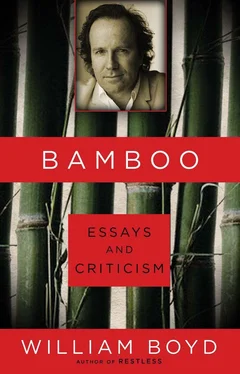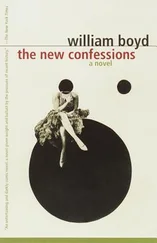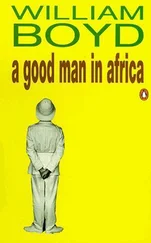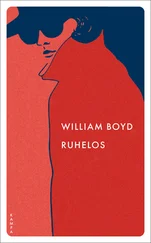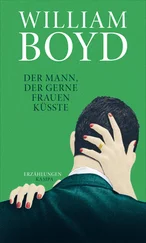A Means to an End/Tool
Photography cannot be separated from its pragmatic advantages. The huge subclass of anonymous photography as pedagogical illustration (in text books and encyclopaedias, for instance) bears this out. There are interesting ramifications, however: a photograph, for example, of James Dean’s wrecked Porsche will fall under the category of “reportage.” A similar photograph, but taken by the insurance loss adjuster investigating the accident, will have an entirely different import. Crime scene photographs also vacillate between these two designations, at once helping to solve the crime but also with their own curious aesthetic effect. Or, to put it another way, once the pragmatic task of the photograph has been satisfied it may transmogrify into something else. The professional photographer’s Polaroid is an exemplary instance. As someone who has been photographed many times by professional photographers, I often find the most pleasing image is the one they discard after the shoot. Professional accessory eliding into serendipitous portrait.
Snapshot
The photographer Nan Goldin has gone on record claiming that the snapshot is one of the highest forms of photography. I would like to go one step further and say that in the snapshot we distil the very essence of photography and find in this concept an explanation of this artless art’s idiosyncratic and enduring power. All photographs and all the types of photographs that are outlined above borrow from or share in the nature of the snapshot to a greater or lesser degree. For what distinguishes photography from all the other visual arts is its particularly intense relation to time. That mechanically retrieved image is the record of a split second of the world’s history. A photograph is a stop-time device and this is what makes every photograph, however sophisticated, however humdrum, unique. And because our mortality and our lives are so bound up with the sense of our time passing — or with the sense of our lives heading on remorselessly to their end — then the artificial ability to stop time yourself with your own photographs, or to witness time stopped in the photographs of others, is profoundly, atavistically appealing. I would argue that it is this feature of photography (and not, for example, Roland Barthes’s concept of the punctum , the “detail”) that explains the individual response to the strange enticement of an individual photograph. One of the great images in this collection (it could have been taken by Henri Lartigue) is a photo of a group of wealthy, well-dressed people, holding umbrellas high against the rain, dashing across a wet road through advancing traffic. The women’s feet are blurred in their hurry, defying the speed of the camera shutter. The ambience is all energy and momentary alarm. The composition of the group is near-perfect: the diagonal swerve of the tyre track imprinted on the glossy tarmac (and how it draws us back into the picture); the vertical shafts of the umbrellas beginning to cant forward in the direction of the rush. Yet what, finally, “makes” this photograph — why it works , I would claim — is the women’s feet frozen in the air in mid dash. This is the pure element of snapshot (our rosebud, our blackbird): we see it plain — time is halted, time stands still.
I think this same notion underscores the allure of the November image in the 1965 Pirelli calendar for my fifteen-year-old self (and thereafter: I have it now — again — in a Pirelli album). There are agreeable associations in the picture — of sea, of sun, of summer — and the girl is pretty enough, in a very 1960s way, but — crucially — the image is un-posed, candid, snapped. Time has stopped: that match will for ever flare, her lips will be for ever slightly pursed.
This crucial, elemental aspect of photography could not be better enshrined than in the image on the title page of this book. In the middle distance a man, silhouetted against the sky, leaps from one towering column of rock to another. The unknown photographer captures him in mid-air, in mid-leap, poised above the significant abyss. This is a great and memorable photograph. All sorts of potential readings and interpretations crowd around it — was it a dare? What was the man trying to prove? Who was this leap designed to impress? How dangerous was it? We will never know, the facts of the photograph are lost to us: and because we can never know therefore all explanations are equally valid. But that moment of time has been recorded and held and the symbolic resonance around the split-second happenstance of its taking is rich. It could stand as a synecdoche for all photography. The great photographs — anonymous or otherwise, the photographs we love and remember — must have a snapshot of the human enterprise, of our human condition, about them, somewhere.
2004
An artist’s antipathies can often be as revealing as his enthusiasms. Picasso, for example, loathed Bonnard, describing his painting as a “potpourri of indecision.” Mind you, Picasso also purported to loathe Monet, which is not bad company to keep, I suppose. One can understand why it was necessary for Picasso to react against these painters — their evanescence, their seductive powers, their refulgence represented everything he himself didn’t want to do. Too soft, too representational, too retrospective, too harmonious and finally, for him, too safe. But like many antipathies such hostility often tells us more about the hater than the target. Such a dismissal of an artist of Bonnard’s rank is a brutal and deliberate misunderstanding. Bonnard’s work is far more disciplined and dogged, more modern and integrity-filled than Picasso’s aspersions would imply — indeed, as this superb exhibition at the Tate amply demonstrates — and it is both intriguing and telling to note that Matisse — the other giant of twentieth-century painting — was a lifelong and close friend of Bonnard and, as their wonderful correspondence illustrates, they were almost co-theorists in painterly matters. Matisse’s world could encompass Bonnard’s, but for an artist like Picasso Bonnard had to be removed far beyond the pale.
There is another problem with Bonnard, and not just his refusal to “go modern”: his pictures are simply too beautiful, too sensuous, too flooded with the most delicious light and colour. Any art — however high, however serious — that is hard to resist, that provokes immediate, almost unreflective pleasure, makes people (critics, historians, curators, academics) illogically suspicious. It is this reaction that prompts the classification of Bonnard as a kind of lazy post-post-Impressionist, a hangover from the nineteenth century, still basking in the creative afterglow of Monet, Renoir, Pissaro, Sisley et al. In fact Bonnard (born in 1867) first made his name at the end of the nineteenth century as an innovative, ultra-modern graphic designer, designing posters and making coloured lithographs. It is worth remembering that underneath the shimmering, feathery brushstrokes and the blurry juxtaposition of pigment there is a tried and robust graphic talent. In 1915 (when Bonnard was forty) he told his nephew that he had resolved a profound artistic crisis in this efficacious and straightfoward manner: “I drew ceaselessly.” And, as the studies for his big landscapes reveal, every painting had its beginnings in a series of highly detailed drawings.
The 1915 crisis had arisen from a fear that colour alone was beginning to rule and overwhelm his art. So Bonnard reapplied himself, quite consciously and with no small pain, relearning the fundamentals behind painting, namely drawing and composition. This was the second crisis of his life that had redirected and corrected his artistic course. The earlier one had occurred in 1905 when he saw the work that Matisse was doing and realized that modernism and everything it implied — all its iconoclasm, its uncompromising decorative side and potential abstraction — was not for him. He voluntarily left that field to others and pursued his own lonely course, a factor that both explains the remarkable homogeneity of Bonnard’s work and also accounts for the marked decline in his reputation between the wars.
Читать дальше
